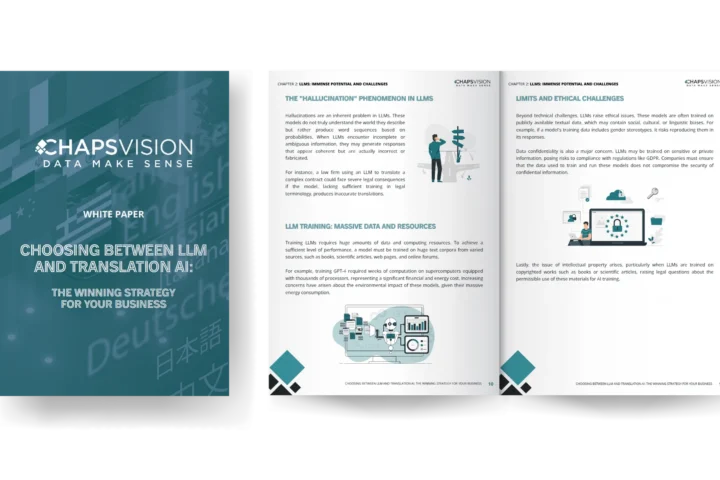Providing high-quality customer support is essential, but measuring it is a challenge. Surveys show that up to 80% of consumers say they’ve switched brands due to poor customer service. When it comes to providing multilingual support for global consumers, speaking the language of your customers is a key success factor. More than ever before, Machine Translation can measurably improve customer satisfaction, efficiently and cost-effectively. The Customer Service metrics reveal problem areas in customer support, and how Machine Translation solutions overcome linguistic barriers at scale.
Key Metrics for Measuring Success in Customer Support
Three key metrics assess support success. Understand and track them to improve service:
Response Time
The time it takes for a customer to get a response to their issue is a critical measure of success or failure. According to Help Scout, 75% of customers think it takes too long to reach live agents. SuperOffice found average response time for service requests to be a staggering 12 hours and 10 minutes! That’s way too long for consumers accustomed to instant satisfaction.
Resolution Time
How long it takes to resolve a customer’s issue is another key metric of support success. A Dimensional Research survey indicates that 72% of customers say they need to explain their issue to multiple people before getting a solution. Resolving issues efficiently saves resources and contributes to a positive experience.
Language barriers are major impediments and delay factors in issue resolution.
Customer Satisfaction
Tracking customer satisfaction through surveys and feedback can help you measure how well your support team is meeting customer needs.
By addressing language localization, businesses enhance customers’ experiences and keep them coming back.
Leveraging Machine Translation to Enhance Multilingual Customer Support Metrics
As businesses expand globally, addressing the diverse linguistic needs of their worldwide customer base becomes ever more important. Let’s explore the benefits of incorporating MT into your systems to deliver multilingual customer service.
Faster Response Time
MT translates customer inquiries immediately into the language of your support team, reducing response time. By overcoming language barriers, MT enables your team to provide more efficient service in the customer’s language.
Improved Resolution Time
By providing support in the customer’s native language, MT can help get issues resolved more quickly and accurately.
Understanding and addressing customer in their preferred language, wherever they live, reduces miscommunication, improves resolution speed and builds customer loyalty.
Increased Customer Satisfaction
By providing support in the customer’s preferred language, MT improves consumer retention.
“Can’t read, won’t buy”: Common Sense Advisory’s research reveals 75% of consumers prefer to buy products in their native language. AI-powered service tools, like multilingual chatbots, enhance support. Smart bots empower your business to provide consistent, efficient, and accurate global support, improving customer engagement and satisfaction across markets.
Choosing an MT Solution for Multilingual Customer Support
Choosing the right Machine Translation solution for your organization is critical to providing high-quality multilingual customer support. Here are three key considerations for selecting an MT solution. By evaluating MT with these factors in mind, you can choose the one that best meets the needs of your support team and your markets.
Accuracy
Choosing an MT solution that produces reliably accurate translations is a critical factor. In 2020, a study estimated neural machine translation had an accuracy up to 90%, and Neural Machine Translation has the ability to improve every year.
Be sure that a candidate MT solution not only offers reliable translation accuracy but is trainable to keep improving.
Here are some commonly used metrics for MT accuracy:
- BLEU (Bilingual Evaluation Understudy) compares MT output to a human reference translation and assigns a score based on similarity.
- METEOR (Metric for Evaluation of Translation with Explicit ORdering) takes into account word order in the source and target languages.
- TER (Translation Error Rate) measures the number of edits required to produce and accurate translation.
Never rely only on numbers. Make sure your in-house experts and consultants give candidate MT solutions a try before you buy.
Customizability
Consider whether the candidate MT solution can be customized to your industry, target languages and specific customer support needs.
Model Studio from SYSTRAN for example allows you to :
- Use your translation memories and glossaries to train your own translation model with your vocabulary, jargon,etc.
- You don’t start from scratch as you benefit from SYSTRAN catalog of existing models
- Model Studio increases significantly the quality of your translation output
System Integration
Choose an MT solution that integrates with your existing customer support systems to ensure a seamless workflow. For example, Zendesk, a popular customer support platform, offers a variety of integrated third-party translation apps to enable seamless multilingual support.
Smarter MT is Breaking Down Language Barriers
Measuring success of customer support is critical to improving satisfaction and retention. By tracking response time, resolution time, and customer satisfaction, you identify areas that need improvement. Metrics justify the need for Machine Translation solutions and help you choose the MT best suited to your needs.
Today NMT powered by AI is transforming the customer service landscape. Smart multilingual customer support applications are delivering new levels of accuracy, customizability, and integration, shattering remaining barriers to speaking the languages of your customers at scale.





